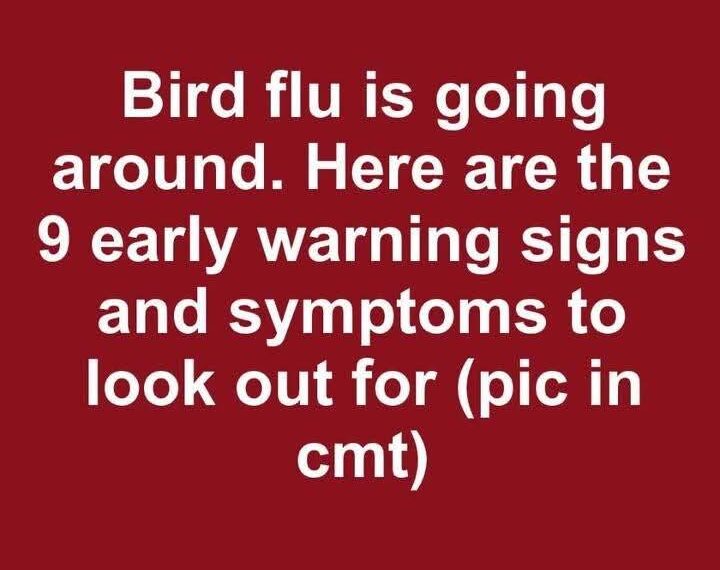In rare but severe cases, bird flu can affect the nervous system, resulting in neurological complications such as:
- Headaches
- Dizziness or confusion
- Seizures (in extreme cases)
These symptoms usually appear in advanced stages or when the infection becomes systemic. Anyone experiencing neurological symptoms alongside flu-like or respiratory issues, particularly after contact with birds, should seek immediate medical care.
Prevention Is Key
Preventing bird flu infection is far more effective than treating it after exposure. Key preventive measures include:
- Avoiding contact with sick or dead birds – Never touch birds showing signs of illness.
- Practicing good hygiene – Wash hands thoroughly after handling poultry or contaminated surfaces.
- Using protective gear – Gloves, masks, and protective clothing reduce the risk for poultry workers.
- Vaccination for high-risk individuals – In some regions, vaccines may be available for workers in poultry industries.
- Cooking poultry thoroughly – Bird flu viruses are destroyed by proper cooking.
By following these simple precautions, individuals can significantly reduce their risk of infection.
Public Health Measures
When bird flu is detected, authorities often implement measures to contain outbreaks, including:
- Quarantining affected areas
- Culling infected or exposed birds
- Monitoring and testing neighboring flocks
- Raising public awareness about hygiene and exposure risks
These measures help prevent the virus from spreading to larger populations and reduce the likelihood of human infections.
Why Bird Flu Remains a Concern
Even though human cases are rare, bird flu remains a significant global health concern for several reasons:
- High mortality rate in humans – Certain strains like H5N1 can be deadly in humans.
- Pandemic potential – Viruses can mutate, potentially increasing human-to-human transmission.
- Economic impact – Poultry industry losses can be substantial due to culling and trade restrictions.
- Unpredictable outbreaks – Migratory birds and environmental factors make outbreaks difficult to predict.
Preparedness, awareness, and rapid response are crucial to prevent small outbreaks from escalating into widespread public health crises.
Key Takeaways
- Bird flu is primarily transmitted from infected birds to humans but rarely spreads between people.
- Early detection of symptoms—respiratory, gastrointestinal, or neurological—is critical for treatment and containment.
- Practicing good hygiene and biosecurity measures reduces the risk of infection.
- Vaccination, protective gear, and proper cooking of poultry are effective preventive measures.
- Public health measures, such as quarantines and monitoring, help prevent outbreaks from escalating.
Understanding bird flu and its symptoms can literally save lives. Being informed about the virus, knowing how it spreads, and recognizing early warning signs ensures that you are prepared to protect yourself and your community.
Conclusion
Bird flu may sound like a distant threat, but its implications are far-reaching. Early recognition of symptoms, preventive measures, and adherence to public health guidelines are essential for keeping yourself and others safe. Whether you work in poultry farms, live near backyard flocks, or simply enjoy visiting bird markets, awareness and caution are your best defenses.
The old saying, “knowledge is power,” has never been more relevant. By staying informed about avian influenza, we can reduce risks, prevent outbreaks, and ensure the safety of both human and animal populations.
References for Further Reading:
- World Health Organization (WHO): Avian Influenza Fact Sheet
- Centers for Disease Control and Prevention (CDC): Bird Flu Overview
- Journal of Infectious Diseases: Human Cases of Avian Influenza





